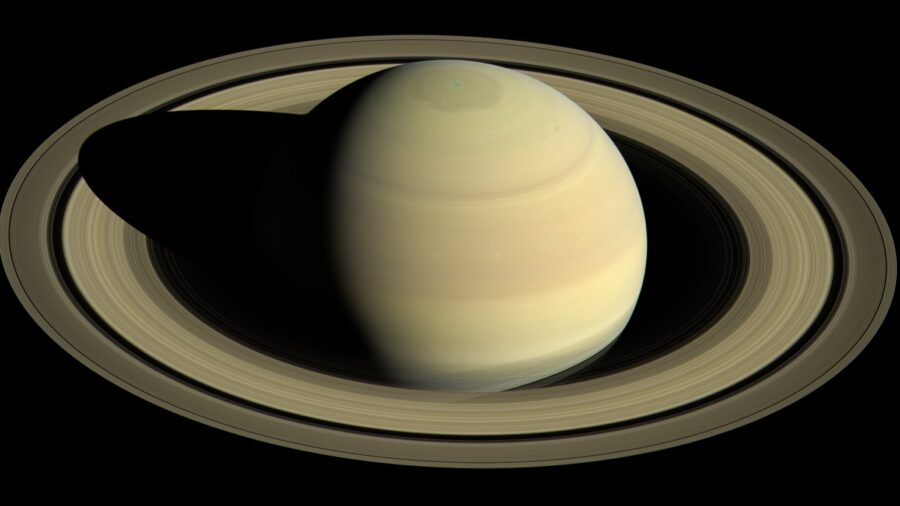See The Man Who Shutdown NYC Neighborhood To Show Everyone Saturn Through His Telescope
Amateur astronomer Joe Delfausse brought traffic to a standstill by setting up his telescope in the middle of a busy Brooklyn street so passersby could look at Saturn. The moment, captured on video, which has since gone viral on social media, shows a sizable crowd forming a queue to peer through Delfausse’s telescope.
“He was really this kind of Zen Buddha in the space, shepherding a bunch of hippie kids who just got out of a concert,” local musician Daphne Juliet Ellis told The Guardian. Despite his location, Delfausse managed to keep traffic flowing as vehicles slowed to pass by the Saturn enthusiasts. The video, which was taken by Lance and uploaded to TikTok, has been viewed over three million times.
“I’m in my 80s, and you want to do something meaningful in your life. I can’t think of anything that’s more meaningful than this kind of stargazing with people. You don’t need a college degree or anything to see Saturn and those rings. When people look through a telescope, they’re all the same.”
-Amateur astronomer Joe Delfausse
On the evening of August 22, Delfausse began stargazing from the sidewalk. However, his position didn’t offer him a clear sight of anything noteworthy.
He was on the verge of calling it a night and heading back home when he realized he could get a better view of Saturn from the center of the street. It was at this point that an unexpected line formed as people left a concert by the indie pop group Alvvays.
“I’m in my 80s, and you want to do something meaningful in your life. I can’t think of anything that’s more meaningful than this kind of stargazing with people,” Delfausse said. “You don’t need a college degree or anything to see Saturn and those rings. When people look through a telescope, they’re all the same,” he added.
“The main thing I do is bring out my telescope where I know there are going to be people, so I can show them the heavens. All of a sudden, they drop their guard. They’re talking to the people in front and behind them.”
-Amateur astronomer Joe Delfausse
The Saturn-loving 82-year-old has been a resident of Park Slope, Brooklyn, since 1976. He originally hails from Long Island and studied at Cornell University. Delfausse moved to Manhattan after graduating and eventually found his home in Brooklyn. His professional journey led him to Citibank before he embarked on a career as an educator, teaching math and computer science.
In 1995, Delfausse chatted to a person at a photography shop who invited him to attend a gathering organized by the Amateur Astronomers Association of New York. This non-profit organization, driven by volunteers, aims to foster the study of space and raise public awareness about planets like Saturn. Since then, Delfausse’s fascination with astronomy has grown steadily.
“The main thing I do is bring out my telescope where I know there are going to be people, so I can show them the heavens,” Delfausse said about the Saturn citing. “All of a sudden, they drop their guard. They’re talking to the people in front and behind them. I guess we’re all starved for connection, and when you see someone’s eyes widen because they’ve never seen anything like that, you feel like you’ve made a difference.”

Saturn is the sixth planet from the Sun in our solar system and is known for its stunning and iconic ring system. It is a gas giant, primarily composed of hydrogen and helium. Its rings are made of countless small particles, ranging from tiny grains to larger chunks of ice and rock. The rings are divided into several main sections, labeled with letters of the alphabet in order of their discovery.
“He was really this kind of Zen Buddha in the space, shepherding a bunch of hippie kids who just got out of a concert.”
-Local musician Daphne Juliet Ellis
Saturn can be observed from Earth with the naked eye, and its rings are visible even through a small telescope. The best time to observe the planet is when it is on the opposite side of the Earth from the Sun. During this time, Saturn rises in the east as the Sun sets in the west, and it remains visible throughout the night.
The visibility of Saturn depends on factors like the observer’s geographical location, local light pollution, and atmospheric conditions. Using a telescope, even a small one, can provide an incredible view of Saturn’s rings and some of its larger moons, such as Titan and Enceladus.
Anyone interested in observing Saturn and its rings should check out astronomical event calendars for information about its upcoming oppositions and closest approaches.












